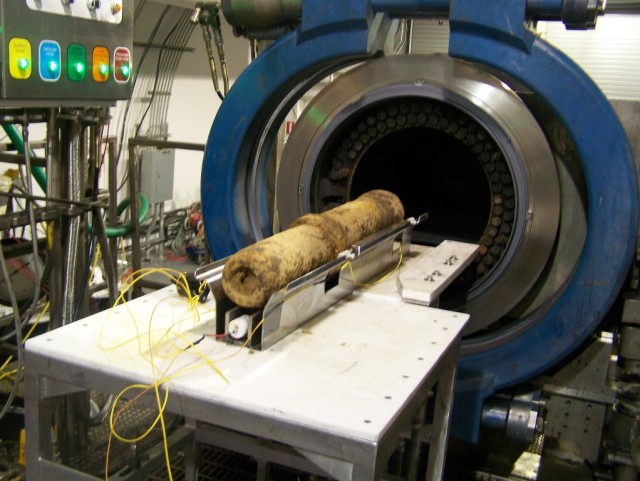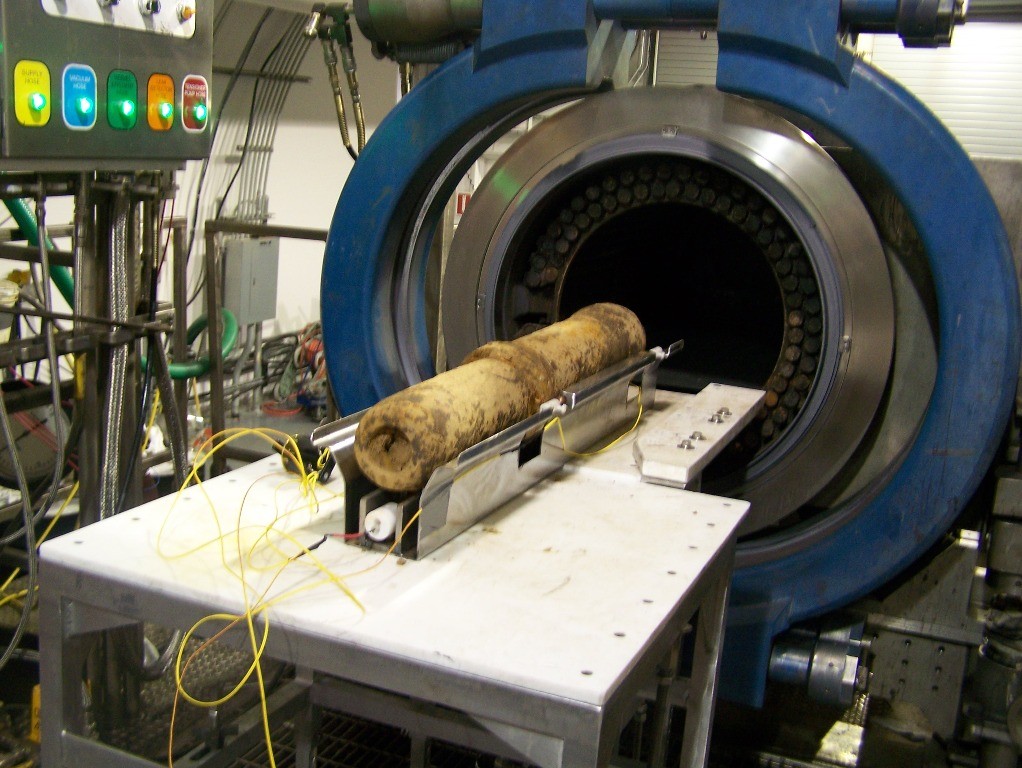
ABERDEEN PROVING GROUND, Md. -- The U.S. Army Chemical Materials Agency (CMA) announced that it completed its mission to destroy all non-stockpile materiel declared when the United States entered into the Chemical Weapons Convention, or CWC, an international treaty mandating the destruction of our Nation's chemical warfare stock.
This milestone also marks the destruction of the largest inventory of recovered chemical warfare materiel to date - more than 1,200 munitions - with a stellar safety record.
CMA's U.S. Army Non-Stockpile Chemical Materiel Project (NSCMP) began operations at the Pine Bluff Explosive Destruction System, located at Pine Bluff Arsenal, Ark., in June 2006 to destroy items, such as 4.2-inch mortars and German Traktor rockets captured during World War II. PBEDS completed destruction operations on April 14.
"The Army's Non-Stockpile Chemical Materiel Project is the nation's best equipped organization to provide safe, successful destruction of such a diverse inventory of recovered chemical munitions," said Carmen Spencer, deputy assistant secretary of the Army for Elimination of Chemical Weapons. "This accomplishment exemplifies the excellent work we have come to expect from this dedicated group."
Munitions were assessed at Pine Bluff before treatment in NSCMP's Explosive Destruction System, a neutralization technology that provides safe, environmentally responsible treatment. Developed as an alternative to open detonation, the transportable EDS provides on-site treatment and neutralization of material and prevents the release of vapor, blast and munition fragments from the process. Operators confirm complete neutralization of the chemical agent by sampling liquid and air prior to opening the system.
"This milestone underscores our commitment to the CWC," said CMA director Conrad Whyne. "This accomplishment could not have been possible without the commitment of all the workers, led by the Non-Stockpile Chemical Materiel Project, including Pine Bluff Arsenal, Pine Bluff Chemical Activity, Edgewood Chemical Biological Center, 20th Support Command, CBRNE Analytical and Remediation Activity-West, Sandia National Laboratory, Idaho National Laboratory, Science Applications International Corporation and supporting work forces. Their levels of technical expertise make it possible for us to fulfill our mission while protecting the public, workers and environment."
The NSCMP research and development team, faced with the unique and diverse inventory of recovered munitions at PBEDS, invented patent-protected processes and cutting-edge vessel enhancements.
"The PBEDS project presented many challenges, but we worked through all of them, achieving a significant milestone," said Laurence Gottschalk, project manager for Non-Stockpile Chemical Materiel. "Everyone involved should be proud of their contributions."
NSCMP engineers and chemists received a U.S. National Patent for developing a technology that improves the detoxification of lewisite, a World War II-era German arsenic-based compound. Before their work, the Army was challenged by disposal of lewisite and other arsenical compounds.
System enhancements included the Advanced Fragment Suppression System, which reduces the amount of solid waste generated by up to 80 percent, significantly cutting costs and supporting NSCMP's commitment to environmental stewardship.

Social Sharing